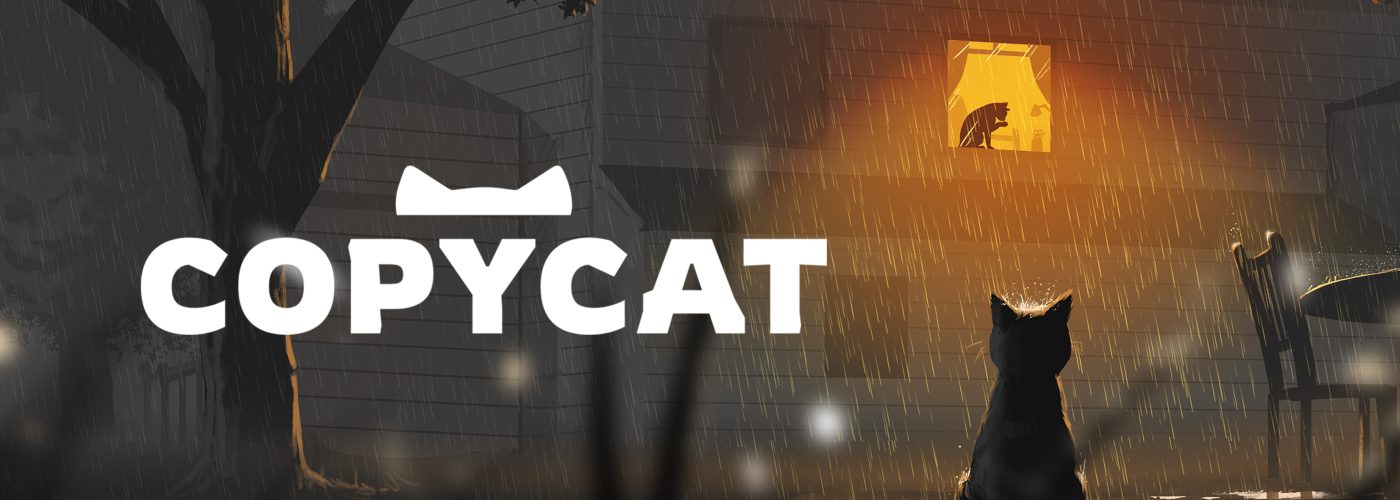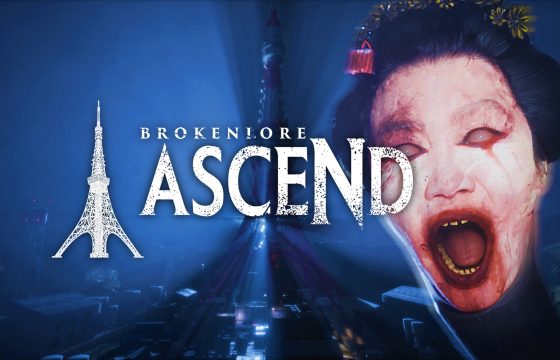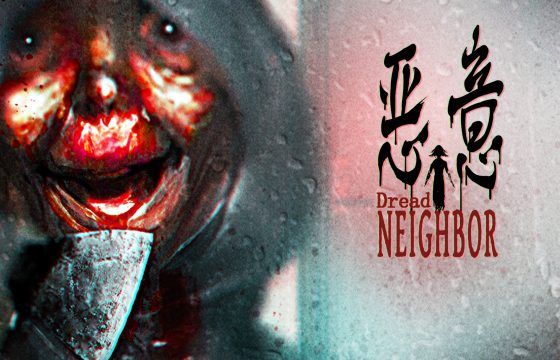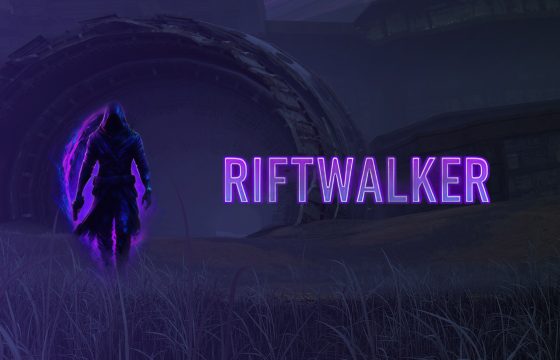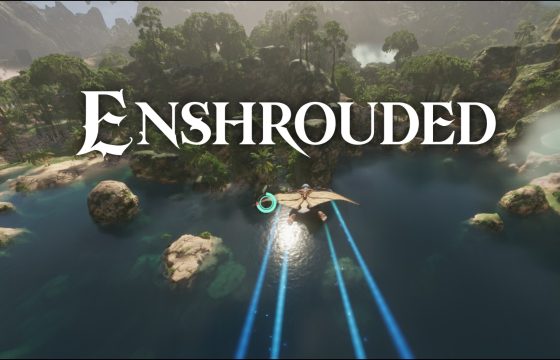Home is not about where you live, but where you are needed most.

Emerging emotionally unscathed after playing Copycat proved to be quite the challenge, as we readily admit. Yet, we could scarcely have anticipated how Spoonful of Wonder would so masterfully, if rawly and melancholically, weave a narrative that tugs at our emotions with such tender precision. The game immerses us deeply in a character and relationship, only to abruptly upend everything, delivering a visceral impact that shatters every fragile piece of our hearts. Though we braced ourselves for an emotional whirlwind, the experience was nothing short of a tumultuous rollercoaster di emozioni.
While the project does have its fair share of imperfections and flaws, it has bestowed upon us an experience so unforgettable that it will linger in our memories for a long time. It resonated deeply with us, both as passionate cat lovers and as individuals. Beneath its rugged and imperfect exterior lies a soul that is intricate, delicate, and richly textured—filled with vibrant hues, subtleties, and themes that are bound to touch even the most stoic of hearts.
With this brief introduction, we present our review of Copycat, the new narrative-driven cat adventure game and the debut title from Spoonful of Wonder, published by Neverland Entertainment and Nuuvem. Join us as we uncover the layers of this meow-velous adventure!
Copycat: Much more than just another Cat Game
Before we immerse ourselves in the discussion and analysis of the narrative—the very essence that pulses at the core of Spoonful of Wonder’s adventure—it is important to provide a brief preamble. This is crucial for understanding our approach and the themes we will explore further. Copycat is a narrative-driven project, where the story serves as the engine that powers and directs much of the gaming experience. Therefore, in order to preserve the integrity of the plot and allow you to experience the story in its purest form, this entire review—including the section dedicated to the narrative—will remain spoiler-free, refraining from delving into specific plot points beyond the second act. Instead, we will focus on a thematic analysis.
However, if you wish to avoid any form of anticipation—whether related to the themes or the narrative structure—we suggest moving ahead to the following sections. For those who are curious to dive deeper into the game’s narrative, we invite you to read our exclusive preview of the complete first act.

The story, despite its occasional highs and lows, is remarkably well-crafted, sustaining a steady pace and a harmonious balance across its three acts. Each act, each chapter of the narrative, not only represents a distinct phase in Dawn’s journey but also serves as a metaphor for a central theme that subtly, or at times explicitly, resurfaces throughout the act.
The journey unfolds as an ever-deepening reflection on the life and soul of a cat, urging us—through the often stern yet sometimes gentle voice of the omniscient narrator—to delve into the hidden recesses of our own psyche. It beckons us to question whether the choices we make are truly right, whether the life of a domesticated cat is the one we truly desire. Though we cannot hear our feline protagonist’s thoughts, doubts, or fears, they are poignantly reflected in the surroundings—in the walls, the paintings, and in the very fabric of the environment itself.
Thematically, the game focuses on three pivotal ideas, forming a triad that lies at the heart of the experience: rejection, belonging, and the deeper meaning of home—not merely as a physical space or a structure we inhabit, but as a sense of belonging, inclusion, and the value we attach to the places we inhabit.


What truly stands out is not just the narrative itself but the raw, visceral message it delivers to the player. In moments of striking intensity, the developers skillfully employ role reversals—sometimes sudden—to upend our emotions. A prime example of this can be found in the first and second acts, where rejection takes center stage. Dawn, our feline protagonist, initially responds with indifference to Olive’s affection, but in a matter of moments—following a series of pivotal events that we won’t spoil—the roles are dramatically reversed, leaving Dawn longing for the very love she once seemed to dismiss.
The theme of abandonment is handled with a rare blend of sensitivity and emotional resonance, leaving an unforgettable imprint. The delicate interactions between Olive and her daughter breathe life into the characters, while the palpable frustration and helplessness in key moments underscore the emotional depth that permeates the game.
One of the game’s most commendable achievements, exceeding expectations, lies in the careful crafting of the relationship between Olive and Dawn—human and feline—a bond that forms the very backbone of Copycat. The gradual evolution of their bond, from initial wariness to tender affection, is crafted with such authenticity that it evokes deep emotion and feels entirely believable. However, it is the lingering mystery surrounding Olive’s previous cat that infuses the narrative with an unexpected layer of complexity, subtly casting a shadow over the facade of apparent happiness.

If we must identify a flaw, the only narrative design choice that left us with a bittersweet aftertaste concerns the player’s freedom of choice. Although these decisions influence the dynamics between Olive and Dawn, leading to subtly divergent narrative paths, their impact ultimately feels minimal. As a result, we found ourselves less inclined to retrace our steps and discover what might have unfolded had we taken a different path.
Is being a Cat fun?
Is purring, licking one’s paws, batting at a ball, and meowing truly entertaining?
Although the preview sparked our interest, we expressed some reservations about the gameplay in Copycat. Our concerns were not born from inadequate execution of ideas, but rather from the fear that these mechanics might not match the narrative’s remarkable depth. Unfortunately, despite several commendable solutions, we find ourselves compelled to affirm those initial reservations.

Don’t misunderstand us: being a cat is neither dull nor frustrating; in fact, it can be quite delightful to immerse ourselves in an alternate reality where we mimic our feline companions without the burden of consequence. However, this experience often feels somewhat limited, particularly when we juxtapose the gameplay mechanics with the richness of the narrative structure. That said, it would be a misstep to overlook the merits of Copycat’s gameplay. We are confident that many of its straightforward mechanics will resonate with younger players.
In addition to walking, running, and executing parkour maneuvers, we engage in quintessential cat activities like knocking objects off tables and, of course, meowing. Players are prompted to perform simple actions by pressing or holding the designated button at just the right moment. These actions are crucial for unlocking subsequent scenes and advancing the storyline.
The mini-games introduce engaging challenges—levels of increasing difficulty that unfold alongside the narrative—requiring players to refine their speed, timing, reflexes, and memory through a series of straightforward tasks. Some challenges come with time limits, while others ask players to replicate animations displayed on-screen. Successfully navigating these challenges enables players to perform desired actions, whether it’s catching a fish, snaring a bird, or triumphing in a perilous encounter with a pack of hungry dogs.
The idea of integrating two small yet effective additional sections into the gameplay has been excellently implemented, adding a touch of variety to the overall experience: a simple, enjoyable platform section and a brief but functional stealth phase. In the latter, players must hide in the shadows and avoid the light as much as possible to evade detection by a pair of fearsome dogs, the staunch guardians of their food bowl.


A final, necessary critique concerns the protagonist’s movement controls and animations. While generally smooth, they don’t consistently uphold the high aesthetic standard seen in the cats’ finely crafted designs. Furthermore, as we mentioned in our preview, we recommend paying closer attention to the handling of the camera’s zoom in and out, which can feel overly erratic and difficult to manage during action-heavy sequences.
Aesthetics, Art, and Sound Design
Before we reach our conclusions and share our personal evaluation of Copycat, we’d like to take a moment to highlight several aspects that we found equally significant to analyze in Spoonful of Wonder’s debut creation.

The game’s aesthetic, while not groundbreaking, is undeniably charming, reflecting a meticulous attention to detail in both broad strokes and finer nuances. As highlighted earlier, the design and animation of the cats stand out, boasting remarkably lifelike facial expressions and a captivating degree of expressiveness. However, the human character models could benefit from further enhancement; despite the evident effort invested, they ultimately lack the believability and visual allure that one might hope for.
Conversely, the interactions between the protagonist and the environmental elements truly stand out. From the gentle brush of Dawn’s paws against household objects to her playful engagement with outdoor elements like tall grass and shimmering water, these moments—despite some minor execution flaws—are undeniably enchanting.
Furthermore, it is essential to underscore the significant value the developers have placed on art in Copycat. Here, art transcends mere aesthetics, evolving into an essential component that, in harmony with the narrative, infuses deep meaning into the themes explored. For instance, consider the striking contrast between reality and imagination when Dawn assumes her feline role in a dreamlike world, envisioning herself as a panther roaming freely through the wilderness, unburdened by the anxieties of urban life. In such instances, art serves as a true co-protagonist, with its vibrant colors, nuanced shades, and delicate melodies reflecting the inner order or chaos that plagues Dawn’s mind.


Regarding the OST, composed by Daniel Bunting, we feel inclined to endorse it, though not without some reservations. While it may not showcase particularly original sounds or tracks, it integrates seamlessly into the game’s overall atmosphere, accompanying them throughout their journey and highlighting pivotal moments in the narrative.
If we were to engage in a bit of nitpicking about the sound design, particularly given the considerable attention devoted to the commendable voice acting, we would have welcomed an even more meticulous approach to the sounds produced by Dawn’s paws interacting with various environmental elements—such as cars, railings, crates, and rooftops—that curiously remain silent. However, perhaps this isn’t a true shortcoming; it could simply be that we are being overly punctilious, expecting too much from a team embarking on their debut project.
How does the game run on PC and Steam Deck?
As highlighted in our previous article, we played Copycat on both PC and Steam Deck to provide you with a clearer understanding of the differences between these two versions and to evaluate their current performance.
In the case of the PC version, we encountered few issues. The game runs exceptionally well, showcasing impressive fluidity and high-quality visuals. While there are occasional frame rate drops during animations, along with some previously mentioned concerns, these do not significantly detract from the overall experience.
For those interested in the specifics, here’s the setup we used to play the game:
- PC Case: Noua Fobia L10 Pink Case
- Motherboard: GIGABYTE B550M AORUS ELITE
- CPU: AMD Ryzen 5 5600
- Cooler: Deep Cool GAMMAX L240 A-RGB White
- SSD: Seagate BarraCuda Q5 1TB
- RAM: Corsair Vengeance RGB RS 16 GB
- Graphics Card: MSI Radeon RX 6650 XT
Conversely, for the Steam Deck version, we advise holding off until the day-one patch is released. Early in our playthrough, we faced a bug that halted our progress and required a complete restart. Furthermore, we experienced occasional frame rate drops and a fixed resolution of 800p, which affected overall gameplay fluidity.
Overall, Copycat is playable on both platforms; however, for those seeking a smoother experience and enhanced performance, we recommend playing it on PC—at least until the game is Steam Deck verified.
A Must-Experience for Everyone
You know, it’s often said that letting emotions guide you is a mistake, but this time, we feel compelled to share something more personal. For us, Copycat wasn’t merely a game—it was a fleeting yet meaningful life experience.
We won’t tell you Copycat is without its flaws, to do so would be disingenuous, not only to what we’ve previously expressed but to ourselves as well. However, it’s precisely these imperfections that make it so beautifully emotional, gripping, and undeniably moving in its imperfect beauty.
This is a deeply touching, reflective journey that anyone—no matter your age—should embark on, whether you’re a cat lover or not. It stands as a tribute to the unconditional bond between humans and animals, but it’s also a profound meditation on loneliness, loss, and the essence of family. Despite some understandable limitations, Copycat succeeds in delivering a universal message, one that leaves an indelible mark on the heart of its players.
If you take our advice, open yourself up—open your heart to Copycat as we did, and as its creators encourage us to do. Embrace it for what it is: not just a “cat video game,” but something far more lasting.

Copycat is available now on PC via Steam, with console releases anticipated in the near future. For more information and updates, be sure to stay tuned, and don’t forget to follow the game’s official X account for continuous insights into the progress of the console versions.
Indie Games Devel was provided a PC code for this review.
That’s all for today. Until next time!
Copycat
PRO
- A narrative that resonates deeply, conveying a profound and noble message
- Themes explored with exceptional care, depth, maturity, and sensitivity
- Simple yet beautiful art design that transcends conventional visual language
- Straightforward yet effective gameplay mechanics
- Not your typical cat video game
CON
- Player choices lack significant impact on the narrative
- The protagonist’s controls are imprecise, and the camera management is less than ideal
- Gameplay is overly stripped down, lacking depth

